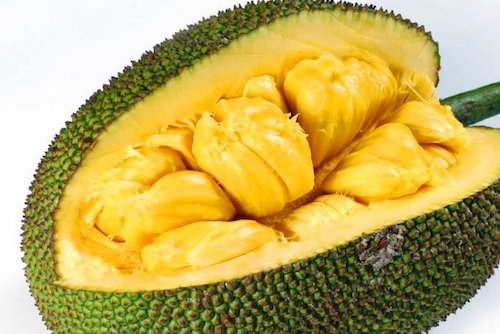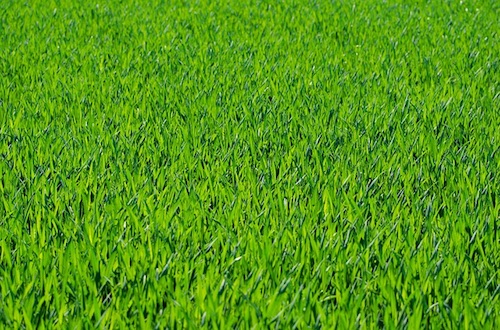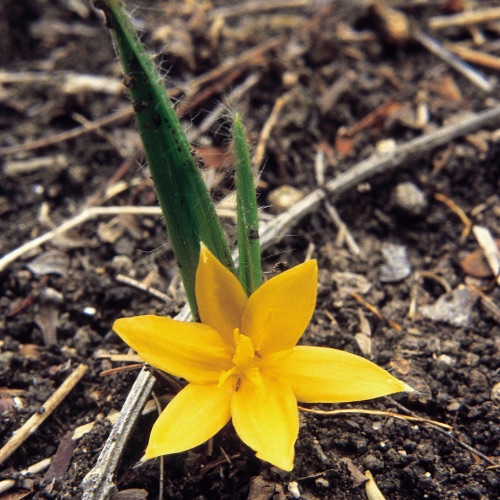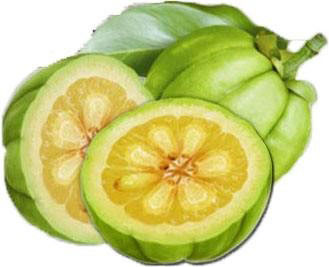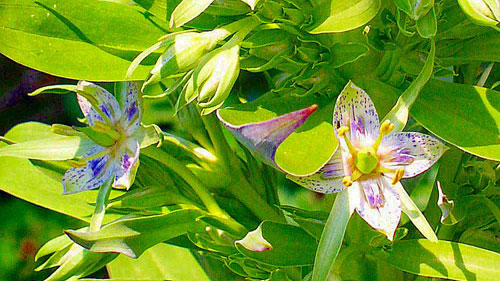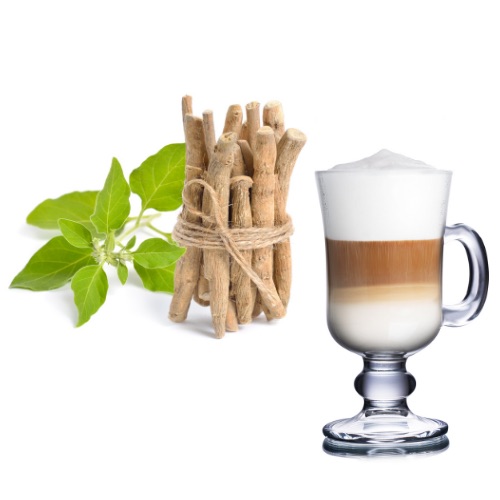Haritaki/ harad/ terminalia chebula is recommended in obesity for weight loss, IBS, diarrhoea, and wound healing. It helps with constipation and slows down aging process.
Related article Natural Ayurvedic Remedies for Diabetes
Haritaki is a very important herb in ayurveda. This has a botanical name “Terminalia Chebula” and belongs to the family Combretaceae. It is also referred to as Pathya in ayurveda.
It is a Large tree with young branchlets and leaf buds. Leaves are mostly sub-opposite, distant, ovate, with long, soft, shining, rust-colored, or silvery hairs. They wither in the cold season. Flowers are Dull white or yellowish, with a strong offensive smell. They Blossom from April to May. Fruits are Obovoid or ellipsoidal from a broad base, glabrous. They form from November to January.
This tree is Abundant in North India and southwards to the Deccan tablelands at 1,000 to 3,000 ft.
The medicinal properties of this fruit have been applauded by Ayurveda Acharyas with the creation of different names. However, it is popularly known as Haritaki due to its effectiveness in defeating numerous diseases. The fruit is a remedy to many diseases with its proven results over time.
It is known as Haritaki as it defeats almost all diseases. This fruit is also known as Abhaya as its use promises good health. Terminalia Chebula has another name Pathya as it can be used as food for many diseases. Here is a list of the benefits of this fruit.
Tridoshahara – Balances all three doshas:
It pacifies and normalizes all three doshas (vata dosha, pitta dosha, and kapha dosha). Hence this can be used in many diseases.
According to Ayurveda principles, the Haritaki pharmacological properties are classified below:
- Haritaki is light and easy to digest (laghu); thereby has the ability to dry up the tissues (rooksha).
- The fruit has a sweet taste (madhura rasa) as well as a bitter taste (tikta rasa), sour (amla rara), and hot (katu rasa). The fruit is usually hot in potency (ushna veerya).
- However, it lacks salty taste (lavana rasa) and the sweet taste is predominant after digestion.
Accelerates wound healing – Vranaropaka
Haritaki with its hot potency accelerates wound healing. This herb helps to reduce skin diseases like psoriasis, eczema, allergic rashes, herpes, etc. This is used externally and internally in the treatment of chronic wounds and inflammation.
Relieves constipation (Mridu Virechaka)
In India, this fruit is used as a home remedy for constipation in toddlers. It reduces incidences of constipation and eases bowel movement.
Increases appetite and bio-assimilation. Agnideepaka
Its consumption helps to improve digestion ( improves agni) and cures indigestion. It is eulogized as Laghu Paki (digests easily). Preparations made from Haritaki act as an excellent ayurvedic fat burner herb and help to reduce body weight
Good for Eyes – Netra Hithakara
This herb is added as an ingredient in ayurvedic preparations for eye diseases. Regular use of this fruit improves the health of the eyes.
Acts as a brain tonic – Medhakara
It acts as a brain tonic that helps to boost memory and concentration. Hence in India, it is daily administered to babies after 3 months along with other brain tonic herbs.
Rejuvenates body and acts as anti ageing – Rasayana
It acts as rasayana or rejuvenating herb. It is praised as Ayurvardhaka (increases life span) and Brimhana (nourishes body tissues and is used in ayurveda weight gain treatment),
Chemical Composition
Fruit contains a constituent that has a wide antibacterial and antifungal spectrum and also inhibits the growth of E.coli, the most common organism responsible for urinary tract infection. The fruit pulp exhibits laxative properties.
Fruits contain astringent substances – tannic acid, Chebulinic acid, gallic acid, etc. Resin and a purgative principle of the nature of anthraquinone and sennoside are also present.
Haritaki in Indian Languages
LOCAL NAMES (in India) : Harithaki (Sanskrit and Bengali), Harad (Hindi), Karkchettu (Telugu), Kadukkaya (Tamil), Harade (Marathi and Gujarati), Alalekai (kannada)
‘Haritaki’ (Terminalia chebula) in Ayurveda
Types of Haritaki and their Uses
Haritaki is a universal tree of different types with their medicinal properties based on the place of growth. Below are the various types of Haritaki based on their places of growth as acknowledged by Ayurveda:
Poothana:
This type of Haritaki is found in Sindh region and it employed in skin packs Colling because of its unique medicinal properties.
Jeevanthi:
Jeevanthi is another type of Terminalia Chebula grown in Sourashtra and its equipped medicinal properties are effective for almost all diseases treatment.
Vijaya:
It contains many medicinal properties help to treat numerous diseases. Vijaya is found in Vindhya
Amrita:
This type of Haritaki grows Champa region forest and it is used to detoxify the body due to its medicinal ability to remove toxins from the body.
Chetaki:
Chetaki medicinal properties find its use in treating constipation and it grows in Himachal.
Rohini:
It helps in treating wounds or bruises and it is found in Vindhya
Abhaya:
This is another type of Haritaki found in Champa region forest. Its medicine properties are useful as remedy for eye diseases.
How to select best Haritaki:
The vijaya fruit which is fresh, fleshy, firm, round and settles in bottom when dropped in water, has to be picked for medicinal use. It must weigh at least 20 grams.
Who should not use Haritaki ?
Persons who are suffering from severe depression, weakness, and low body weight or are willing to gain weight should not use this fruit. It is strict no for pregnant ladies. People who are on fasting or have acute fever are barred from using this. Never consume this fruit when you are thirsty.
How to use Terminalia Chebula
Dr.Jayashree Nataraj an eminent ayurvedic vaidye explains how to take this herb.
Abhaya could be used with different carriers or vehicles during various seasons in order to achieve balanced doshas througout the year.
Haritaki should not be advocated for a long time in Pregnancy
The fruits of this herb when cooked with steam act as astringent and hence useful in diarrhea and IBS (irritable bowel syndrome).
The kashaya or decoction/ infusion of this herb can be used to wash the wounds.
HINDU MYTHOLOGY For Terminalia Chebula:
Highly esteemed by the Hindus, and a mythological origin has been assigned to it. It is said that when Indra(king of dieties in hindu mythology) was drinking nectar in heaven, a drop of the fluid fell on the earth and produced Haritaki
Research of a Young Indian Origin scientist about the use of haritaki in Cystic Fibrosis
Achievement of Young Scientist of Indian Origin
Madhavi Pulakat Gavini: Siemens Competition Silver Medalist
by Amy Hodson Thompson, Cogito, 12.12.2006
It’s not what you know; it’s who you know, right? Well…in science, not quite. For seventeen-year-old Madhavi Pulakat Gavini, it was the “what” – her new potential treatment for Pseudomonas infection – that won her 2nd place at the Siemens National Competition and a $50,000 college scholarship to add to her 2006 Intel International Science and Engineering Fair grand prize win. For Madhavi, “who” is an important factor, but in a different way.
Pseudomonas aeruginosa (P. aeruginosa), a bacterium that is common in water, soil and on plants, causes serious or deadly infections in people who are immune compromised. A friend’s aunt, who Madhavi came to know well, had cystic fibrosis (CF). For CF patients, Pseudomonas infection of the lungs is one of their number one killers. “So I looked up everything I could about CF when she told me about it,” says Madhavi. “My project just took off from there.”
Plants vs. Bacteria
Madhavi’s grandfather, an Ayurveda traditional medicine practitioner and physician in India, encouraged her to test Ayurveda’s traditional herbal extract treatments against P. aurigenosa. She selected 10 extracts used to treat lung conditions. “I just grew my P. aeruginosa strain on the plates and spotted the extracts onto the plates also to see if any of them could inhibit bacterial growth,” says Madhavi. “A couple had a pretty small zone of inhibition, but one particular extract, Terminalia chebula (Tc), dramatically inhibited the bacteria’s growth.”
“Millions of people suffer from chronic Pseudomonas infections,” says Madhavi. “An antiseptic spray or inhaler could greatly improve their quality of life as well as increase their lifespan.”
Madhavi thought she might have something important, but knew she needed to put aside her extracts for a while. P. aeruginosa, because it can live in and infect such a wide variety of organisms, from plants to humans, has different forms. The “rough” form, named for its appearance on a bacterial plate, is a common strain found in soil, water, and plants. This is the laboratory strain Madhavi used in her initial experiments. But in humans, P. aeruginosa is usually in a “smooth” form, a strain that grows an additional, sticky polysaccharide coat, and often exists in a complex bacterial community called a biofilm. Biofilm-forming strains, with their ability to stick to lung cells and resistance to antibiotics, pose the biggest threat to humans. Madhavi needed to test her extract on a biofilm variant.
Up to this point, Madhavi had been pursuing her project for fun over the summer before her junior year of high school in the biology lab of Dr. Lakshmi Pulakat, her mother and mentor at Mississippi State University. When she started at the Mississippi School for Mathematics and Science (MSMS), she took the project with her. It was Madhavi’s first year at the boarding school, and she was really enjoying the atmosphere. “There are students here who are definitely interested in research, and a lot of them are pretty gifted. So it’s fun,” says Madhavi.
Madhavi enrolled in MSMS’s dual research program that took her to MSU for research during the week, and she worked on weekends and over school breaks too. She had plenty of resources, but she didn’t have one essential piece for her next step – isolating a biofilm-forming Pseudomonas. “I read in a couple of different places that in order to get it to grow biofilm you need what’s called a drip column,” says Madhavi. “It’s rather expensive so I just wanted to see if I could come up with another way of manipulating the bacteria so it will grow the biofilm.” Engineering this new technique became her independent study project in microbiology class.
Fishing for a Biofilm
Pseudomonas’s biofilm has two main functions: the first is protection, and the second is to allow the bacterium to adhere to smooth surfaces like the epithelial cells in our lungs. The biofilm’s stickiness also makes the cells adhere to plastic. So Madhavi put plastic micropipette tips in cultures of bacteria floating in water and growth medium. The stickier biofilm-forming bacteria grew on the tips, and this allowed Madhavi to “fish” out few biofilm-forming chromoisolates from the “rough” strain.
Now it was time to test Terminalia chebula against biofilm-forming P. aeruginosa. When Madhavi looked at the large zone of inhibition produced by Tc against her new isolate, she knew that she was looking at something big. None of the drugs for Pseudomonas infection currently on the market could do what Madhavi had just accomplished: inhibit both rough and biofilm-forming P. aeruginosa.
Madhavi’s grandfather never got to hear about Tc’s success, he died in the spring of 2005. But she still had another influential “who” to consult in India, her physician and Ayurveda practitioner grandmother. “She would go back and talk to my mother about her project,” says Dr. Pulakat. “She wanted to confirm the fact that Tc was not dangerous.” Madhavi’s grandmother reassured her that the extract has been used as a medicine for thousands of years, and is even safe enough to give to infants. Madhavi, hoping to turn Tc into an effective treatment for P. aeruginosa, set about trying to determine exactly what molecule in the extract was responsible for its action.
Unmasking a Molecule
Madhavi painstakingly determined that Tc retained effectiveness even after 100-fold dilution, after having been sterilized with the extreme heat and pressure of an autoclave, and after passing through a 0.1 micron filter. Then, because all her experiments had tested Tc against new bacterial growth, she pitted it against bacteria that had already been growing for 5 hours. Within 2 hours of Tc treatment, the P. aeruginosa was dead. Tc’s ability to kill bacteria even through a biofilm was confirmed.
Read more about Madhavi in the January/February Medicine and Health Sciences issue of Imagine Magazine, JHU/CTY’s magazine for gifted students.
Genetic analysis was next. Madhavi exposed growing cells to Tc, harvested their RNA and compared it to untreated control cell RNA using microarray analysis. When Madhavi finished analyzing the nearly 6,000 microscopic bright gene spots on her chips to determine the levels of RNA for each protein in treated and untreated cells, the reason behind Tc’s effectiveness was clear. Tc-treated bacteria had a reduction in expression of genes necessary for biofilm production, for energy metabolism, and for infecting cells.
Now, Madhavi is working towards developing an inhaler to deliver Tc to the lungs or a spray to deliver Tc to the skin, surfaces, or environment as a way to prevent infection. “I envision Tc extract being used in a multitude of everyday products ranging from household cleaning supplies, to contact lens solutions to toothpaste additive,” said Madhavi in the conclusion to her Siemens competition presentation. She has proved that linking the extract with gold nanoparticles so that they can be tracked in living animals does not compromise its action, and her next step is to test the extract in a mouse cystic fibrosis model. “Millions of people suffer from chronic Pseudomonas infections,” says Madhavi. “Such an antiseptic spray or inhaler could greatly improve their quality of life as well as increase their lifespan.”
If Tc’s promise holds, who knows how many “whos” Madhavi may end up helping.
Madhavi Pulakat Gavini is a senior at the Mississippi School for Mathematics and Science. She enjoys late-night hot chocolate parties in her dorm, has lots of plants, and is a voracious reader. She was a National History Day finalist in 2005 with a paper about Linus Pauling and his stance on nuclear weapons. She intends to pursue biomedical research as a career.
Courtesy : Cogito.Org Online community for academically talented youth
Reference – https://www.ncbi.nlm.nih.gov/pmc/articles/PMC3631759/
Author – Dr.Savitha Suri. Consultant ayurvedic physician.
Reference : https://www.ncbi.nlm.nih.gov/pmc/articles/PMC4749770/
Free Ayurvedic Consultation
Call us at +91 9945995660 / +91 9448433911
Whats App + 91 6360108663



